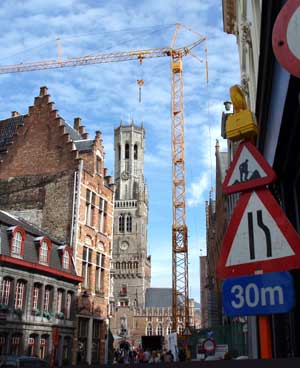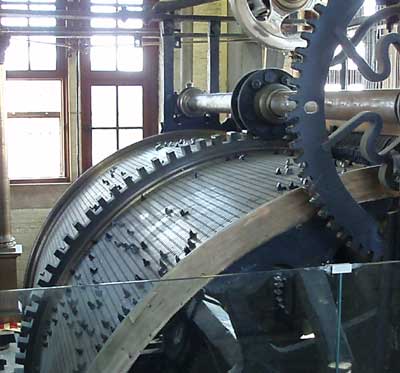The Belfry

Background
The Belfry is the iconic image of Brugge. It was originally a watchtower and so symbolised the freedom of the municipality
It is like a multi-stage time rocket. The bottom part was built in the early 13th century of bricks. It was added to later in that century with a wooden structure which burned down but was reconstructed. In the 14th century bricks were used up to the second level gallery. The octangular part dates from the late 15th century. A wooden spire, 38 feet high, was added but was destroyed by lightening at the end of the 15th century. It was promtly rebuilt but destroyed again in the middle of the 18th century and was not rebuilt.
The model above, which is housed inside the current belfry, shows the full structure.
The total height of the present tower is 265 feet. You can climb the 366 steps which bring you to about half way up the octagonal structure from where you can get magnificent views of Brugge and its surrounding areas.

An unusual view of the rear of the belfry taken through an arch from the oude burg.

The belfry from Sint Jakobsstraat with the ubiquitous crane. Everyone is building something these days.

View of the rear of the belfry from the corner of Woolestraat and Oude Burg.

The automatic mechanism for the clarillon dates from 1748 and was constructed by Antonius de Hondt. The drum weighs 9 metric tonnes and has 35,000 peg holes. It can be programmed to play any tune and is currently (June 2008) set to play Danny Boy on the half hour.

This is the actual clock mechanism which is beautiful to watch.

This is the recital room where the clarillon can be played manually.